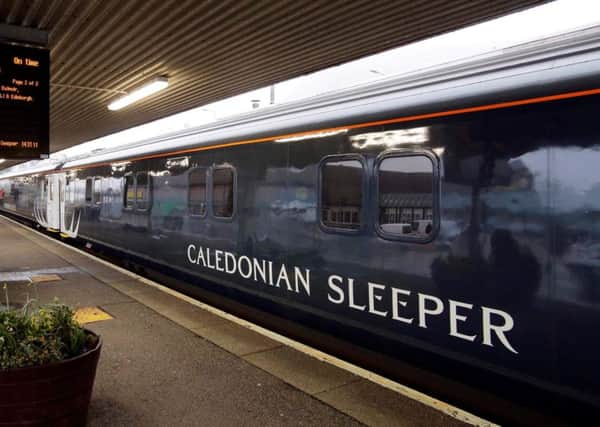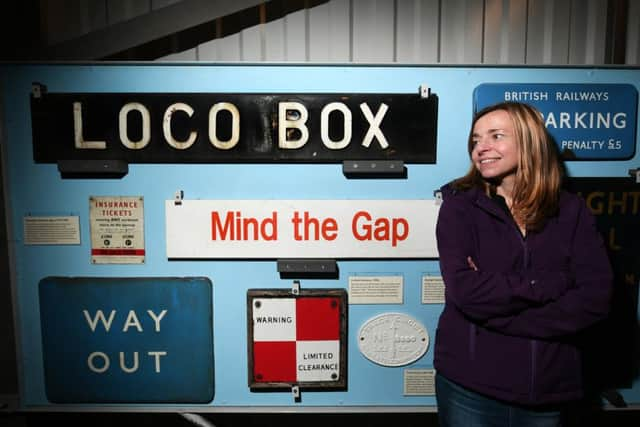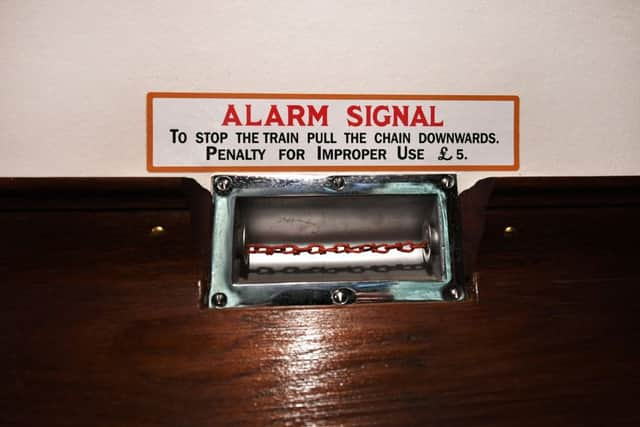Retired Caledonian Sleeper carriage joins historic predecessors at rail heritage exhibit


The coach, which has been in service for around 35 years, will go on show beside one of its predecessors, built in the heyday of steam in 1935.
Visitors to the Museum of Scottish Railways at Bo’ness will next year be able to walk through their corridors, from the elegant teak-panelled London and North Eastern Railway (LNER) carriage to the more functional Formica of its British Rail-designed successor.
Advertisement
Hide AdAdvertisement
Hide AdThe first class LNER coach is the last-remaining wooden-bodied sleeper, which graced trains like the Night Scotsman between London, Edinburgh and Aberdeen.


It originally boasted a shower, while restoration work by volunteers including Don Clarke will include a combined berth/sitting room – a mini suite for the most important passengers.
Other period features are chamber pots under the basins and illuminated cabin number indicators above each berth door.
Signs in the cabins advise that “A linen drugget [floor cover] is provided for passengers to stand upon when undressing and dressing.”
However, much of the wood has had to be replaced with teak salvaged from a school being demolished near Helensburgh.


The carriage, which was in operation up to 1972, was latterly repainted in British Rail blue.
It will soon be joined by a coach from sleeper operator Serco, which has run between London and the Highlands under British Rail, then ScotRail, since the 1980s.
A brand new fleet, operating on Edinburgh and Glasgow-London services since April, is due to take over those other routes next Sunday.
Advertisement
Hide AdAdvertisement
Hide AdMuseum director Julia Stephen said: “For those who have never travelled by sleeper, this will be the only way they can see inside a key part of Scottish railway history.”


Jim Summers, a restoration volunteer at the Scottish Railway Preservation Society-run museum, added: “We are the ones who will really show off sleeping cars – overnight services have been a big thing for Scotland.”
David Meara, author of Anglo-Scottish Sleepers, said: “This sounds a great project, and I look forward to seeing the restored carriages.
“It will be great to see two sleeping cars, one 50 years older than the other, and be able to compare how they have evolved both in design and comfort terms.
“I guess we will all mourn the loss of the sheer style and elegance of the 1930s carriage, while admitting the Mark 3 carriage of the 1980s both conformed to health and safety requirements and ensured a more comfortable ride, with better heating and air conditioning.


“The fact these [latter] carriages have lasted as long as they have and continue in service long after they should have been retired is a great testament to the standards of design and manufacture of the time.
“But if I could chose, I would still love to have just one night in those stylish 1930s LNER cars, running up the east coast main line to Scotland as the grouse season starts.
“The first class cabins contained a proper bed made up with mattress, sheets, pillows, blankets and eiderdown monogrammed with the LNER logo.”
Advertisement
Hide AdAdvertisement
Hide AdMary Grant, chief executive of leasing firm Porterbrook, which is donating the 1980s carriage, said: “We are delighted to make available one of our recently retired sleeper coaches.
“As a regular user of the Caledonian Sleeper, between home and London, I know how these overnight services are a quintessential part of Scotland’s railway story.”
She said the carriages “will enable visitors to see the continued evolution and romance of ‘hotels on rails’.”


Transport Scotland rail director Bill Reeve, who oversees the sleeper franchise, said: “As we roll out our upgrades to the iconic Caledonian Sleeper fleet, it is fitting these previous carriages will be preserved for history. Their addition has the potential to attract rail enthusiasts and tourists alike.”